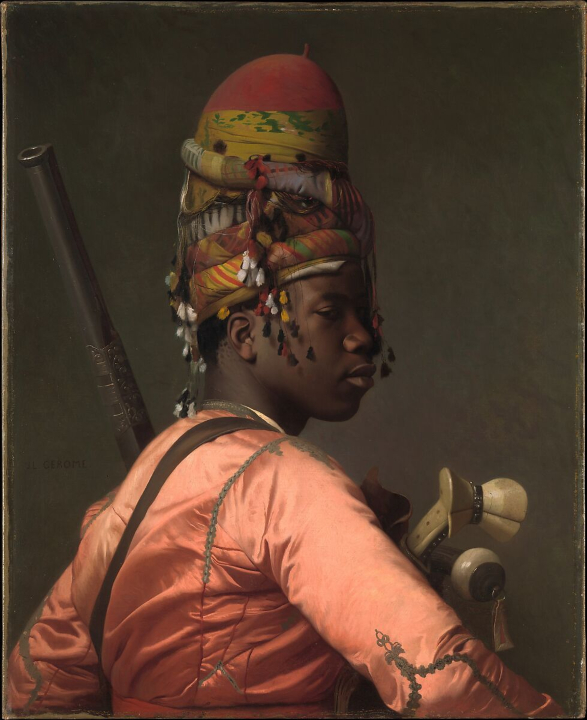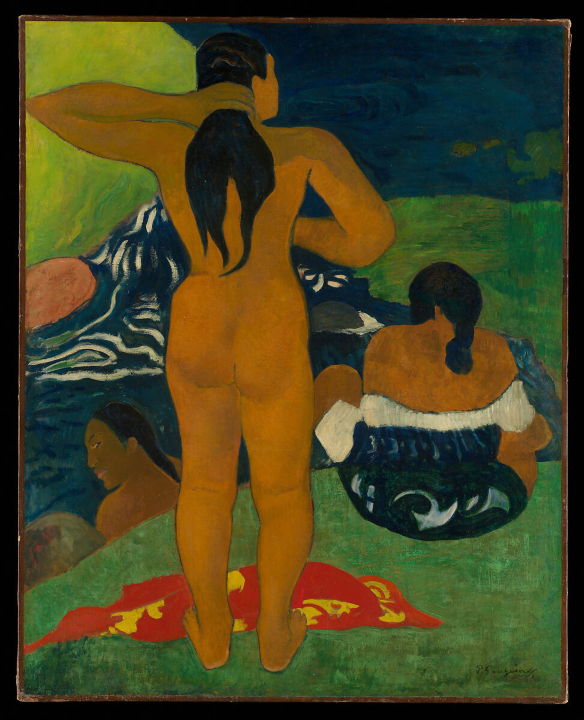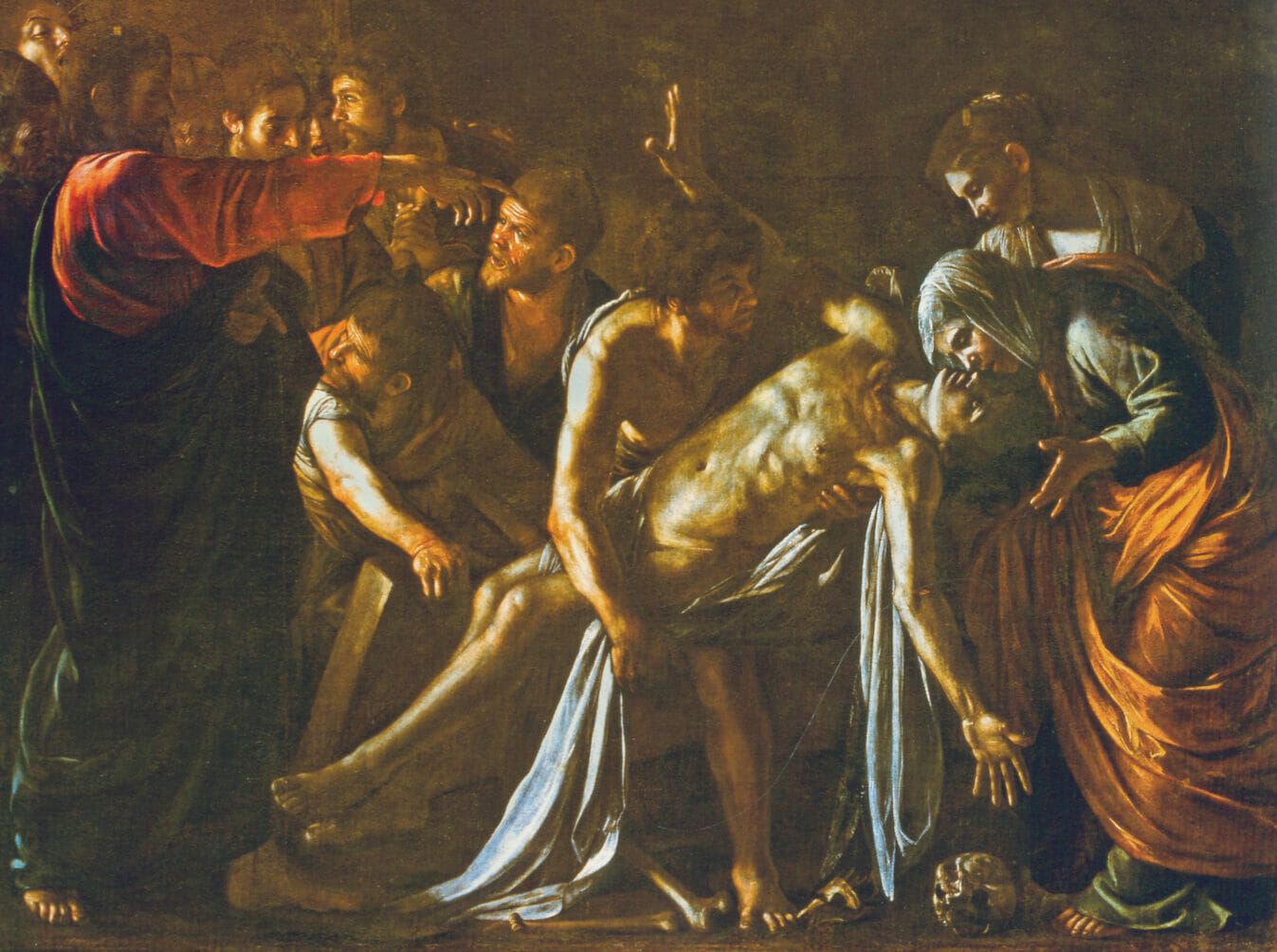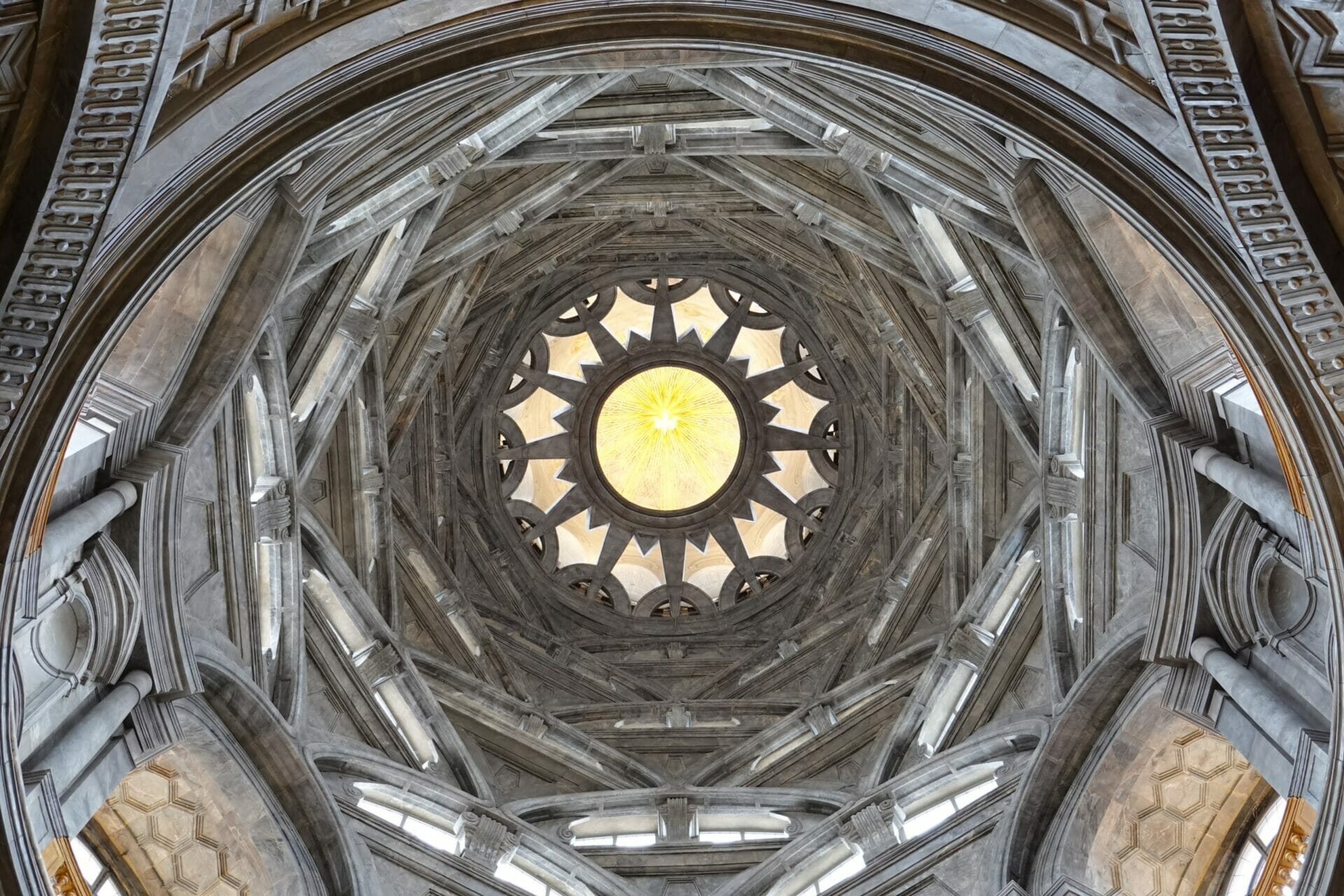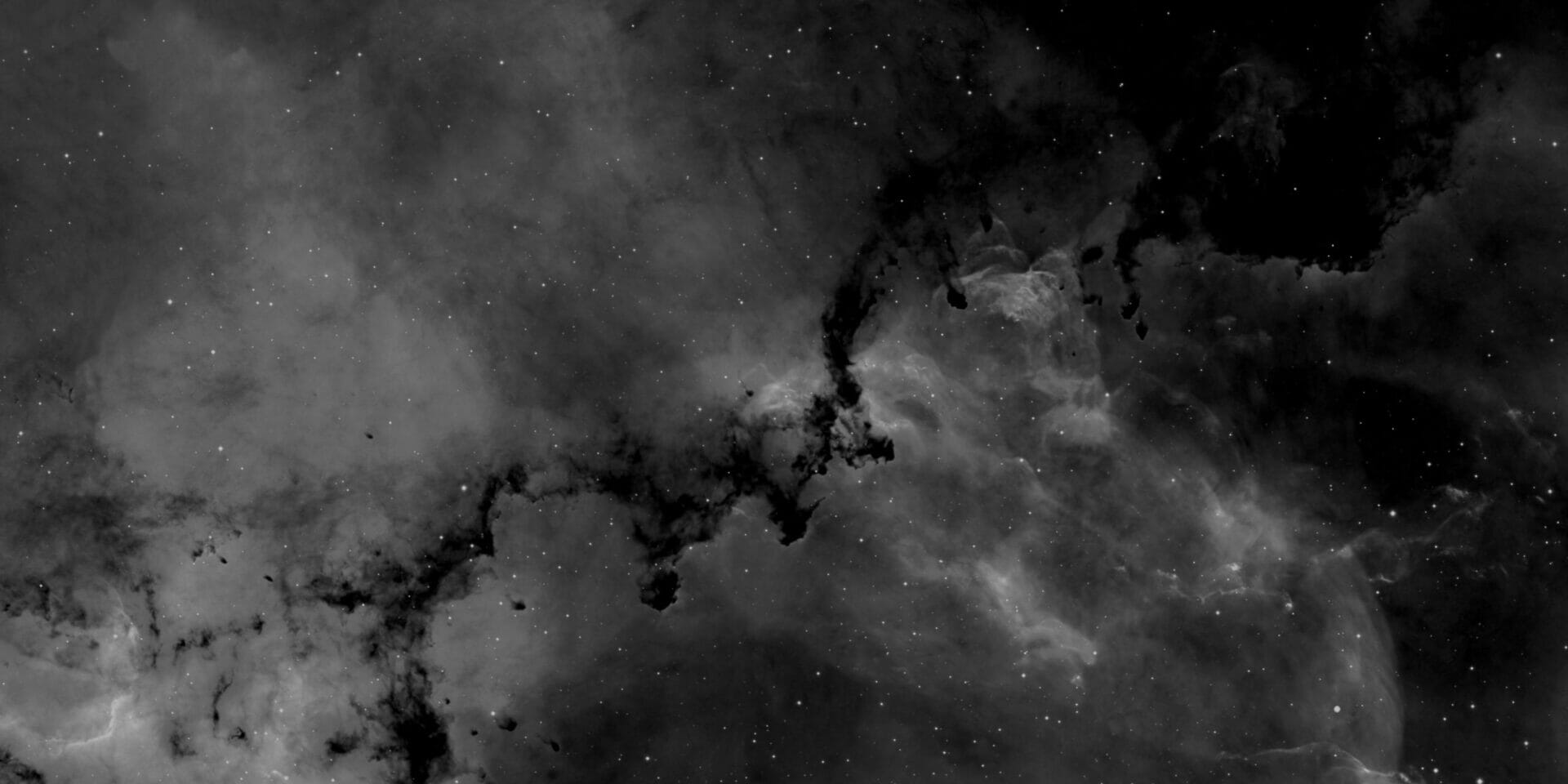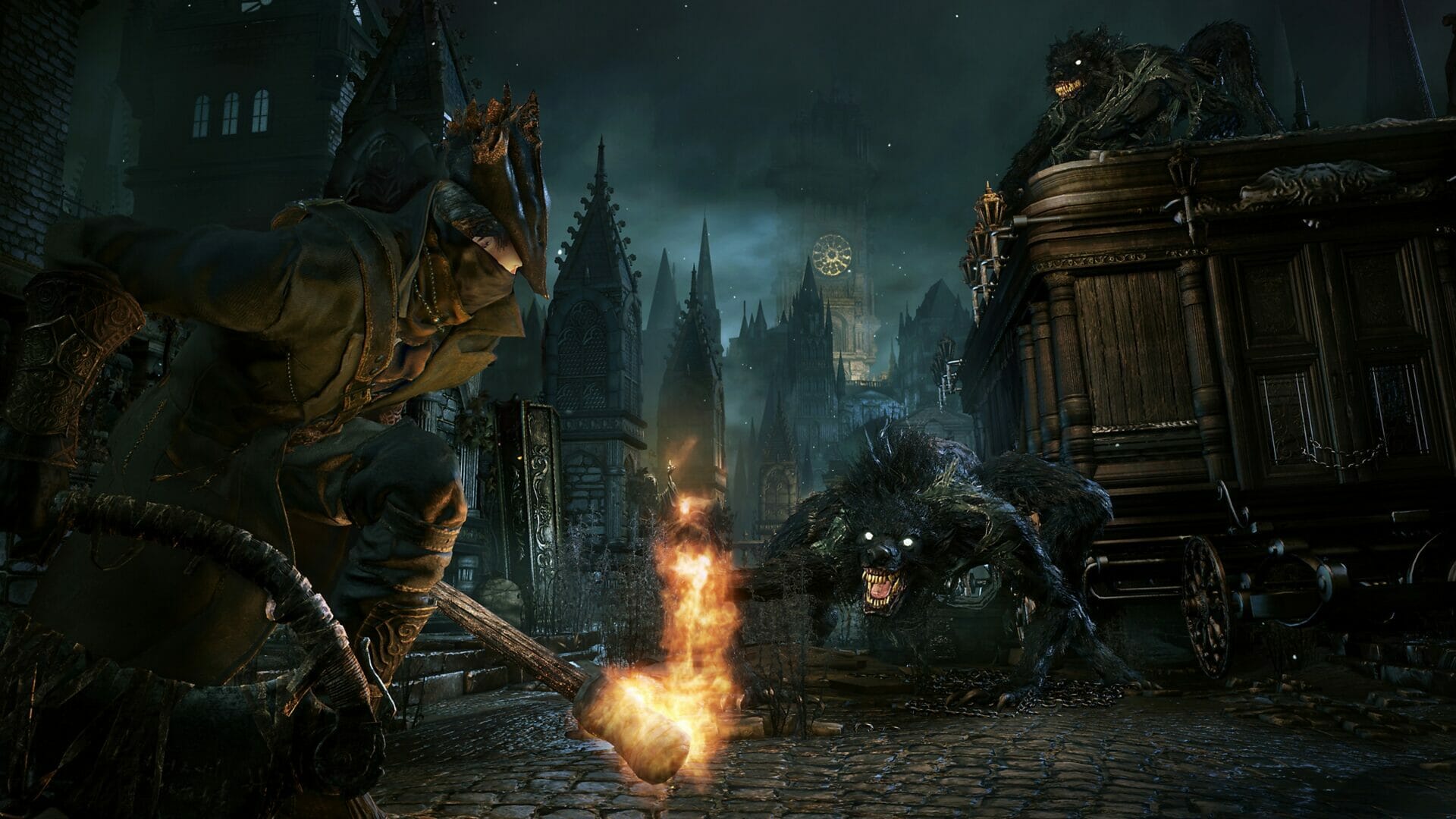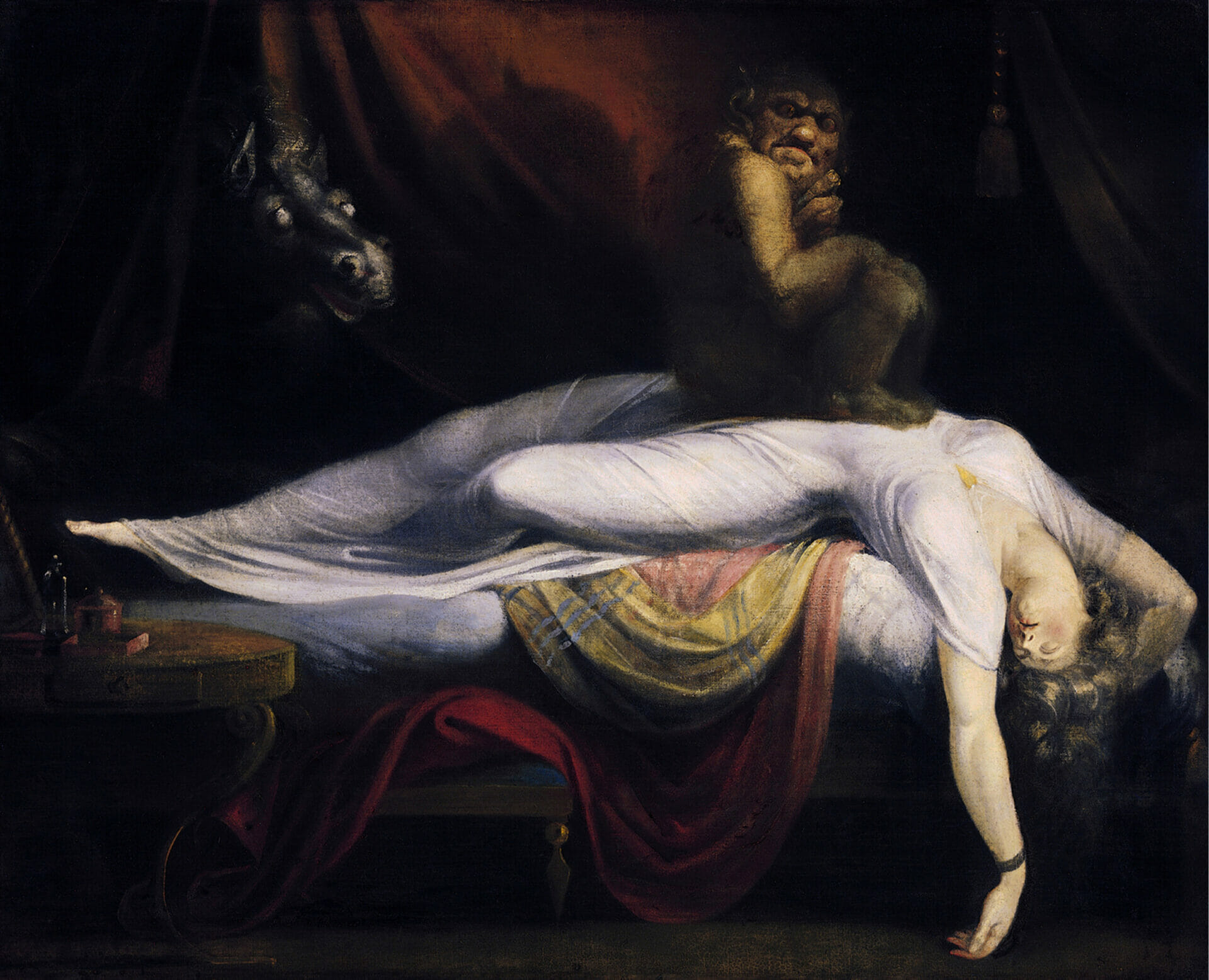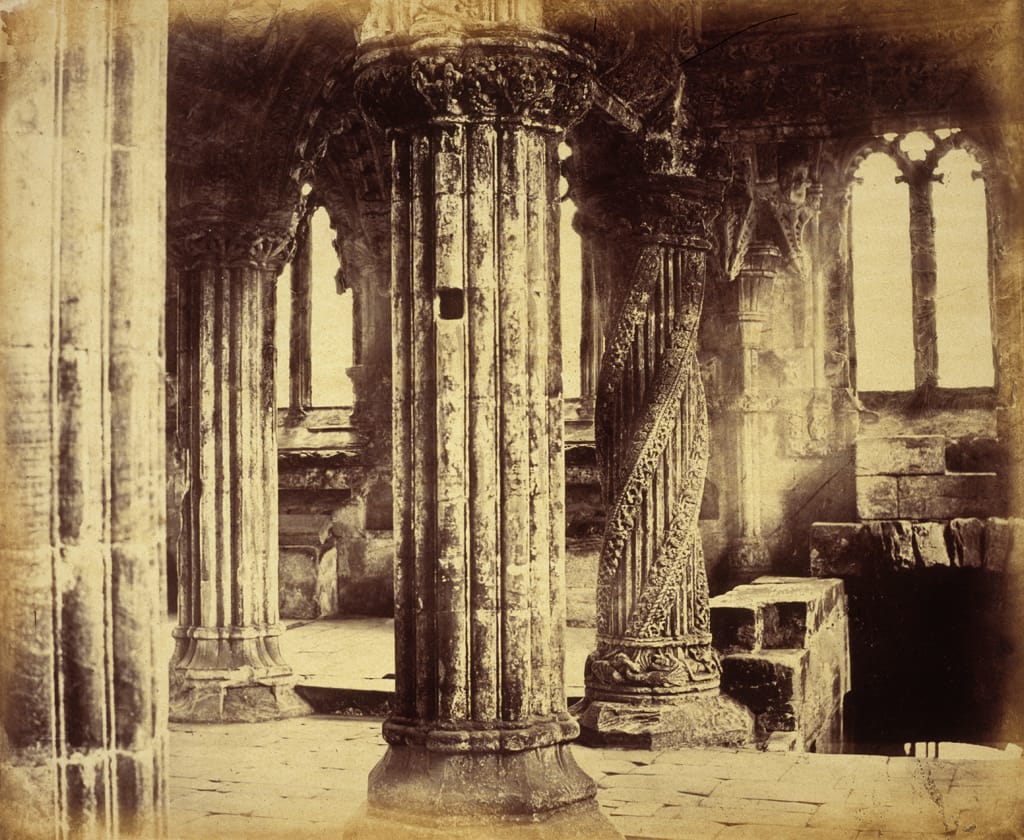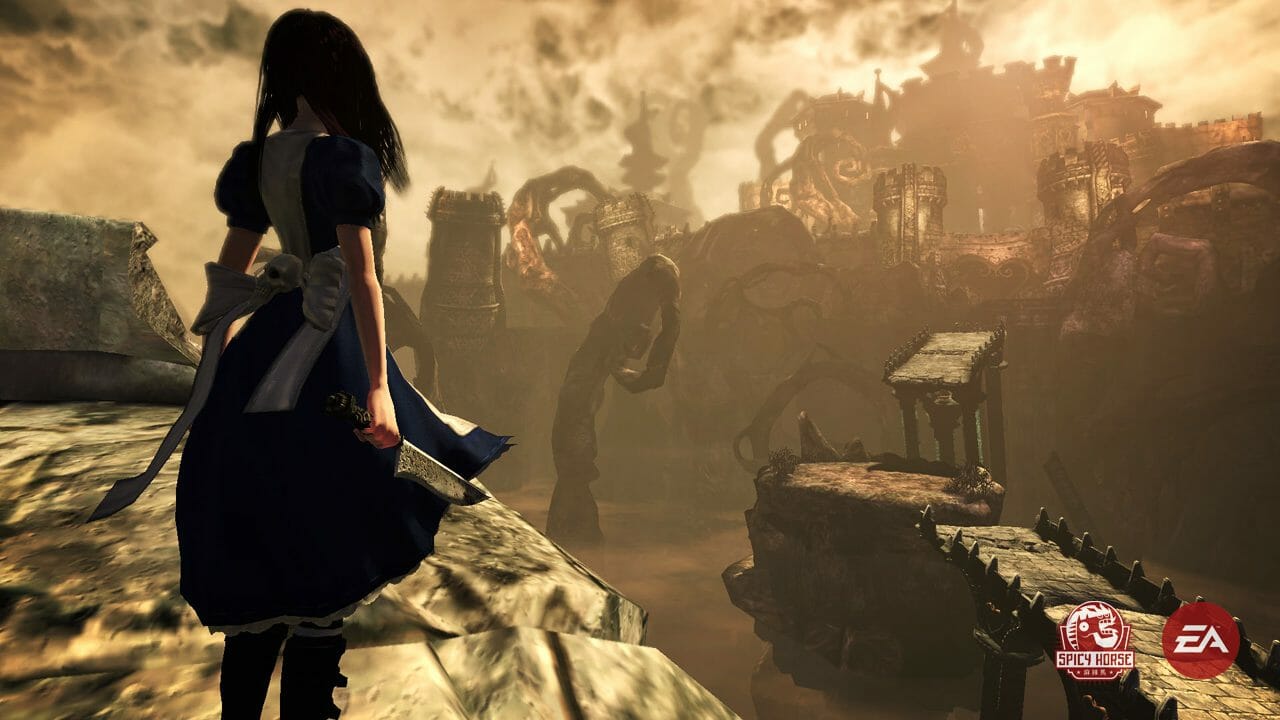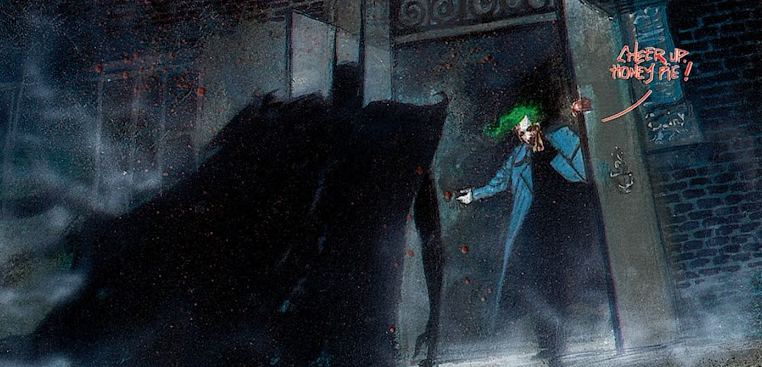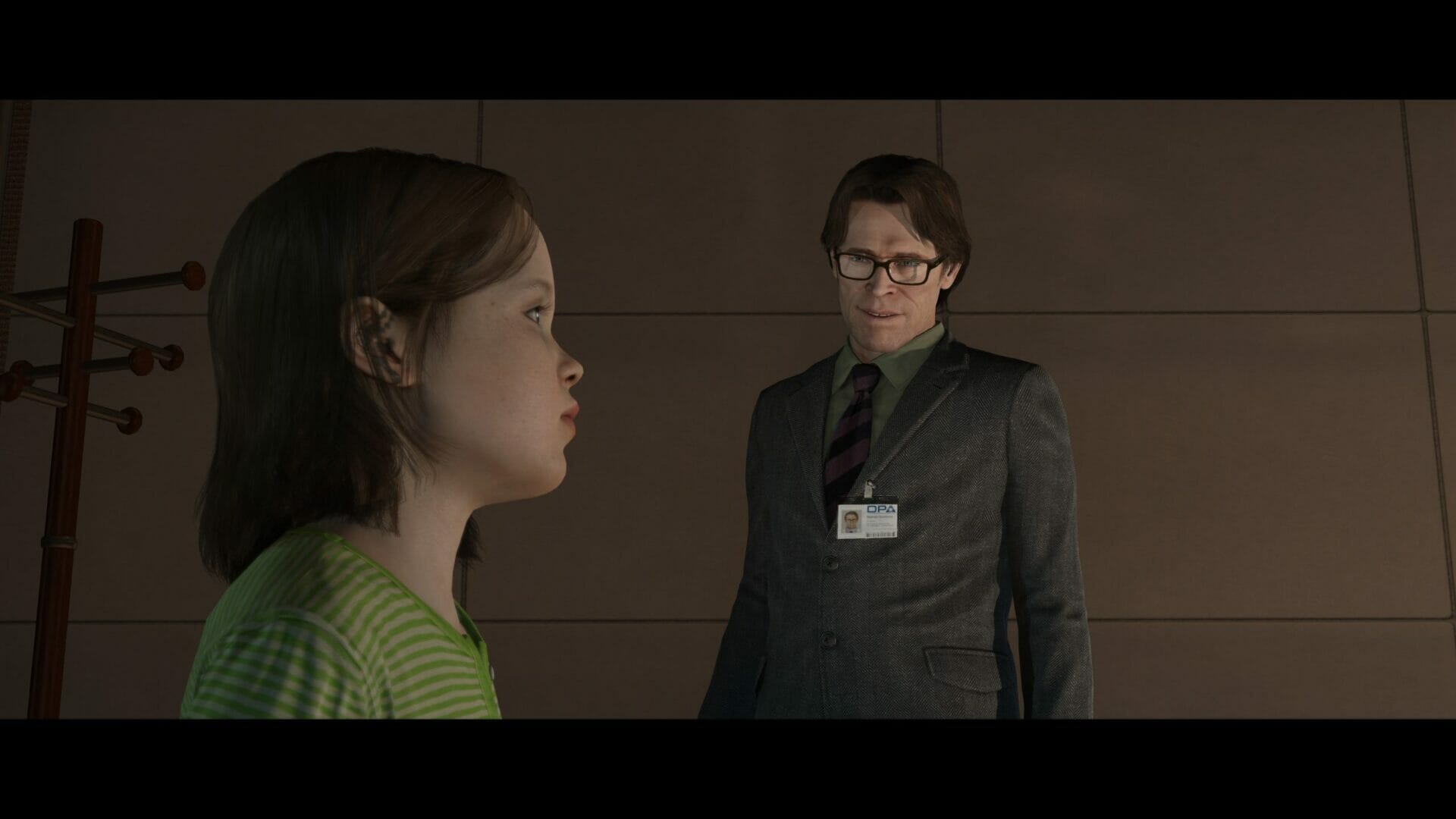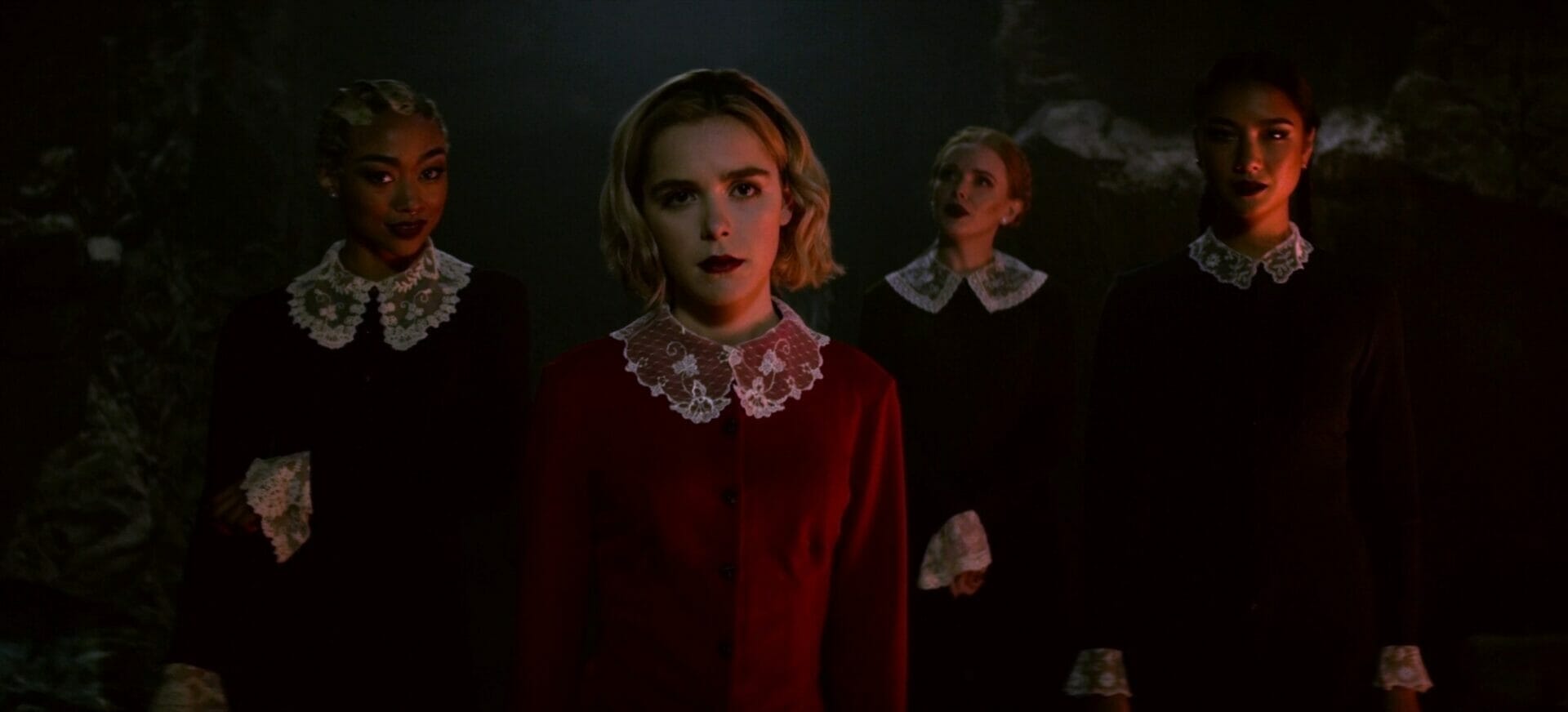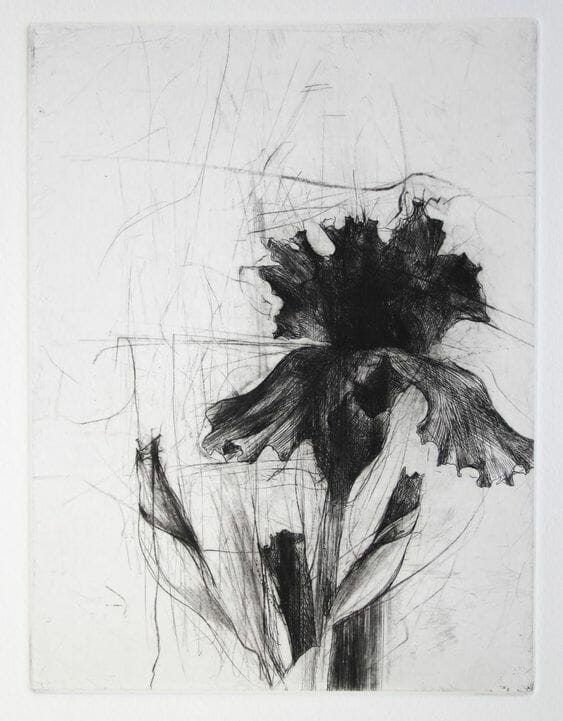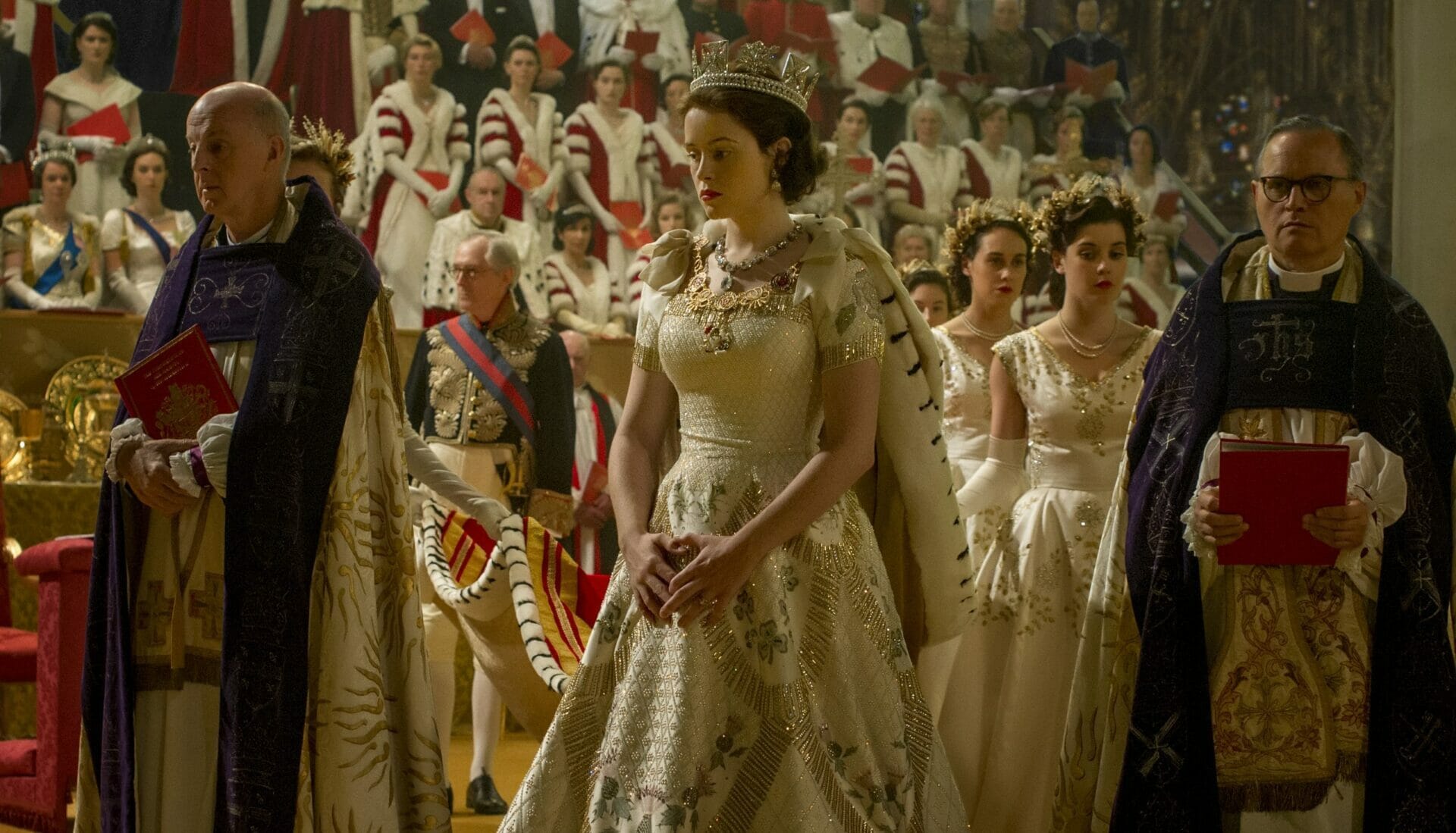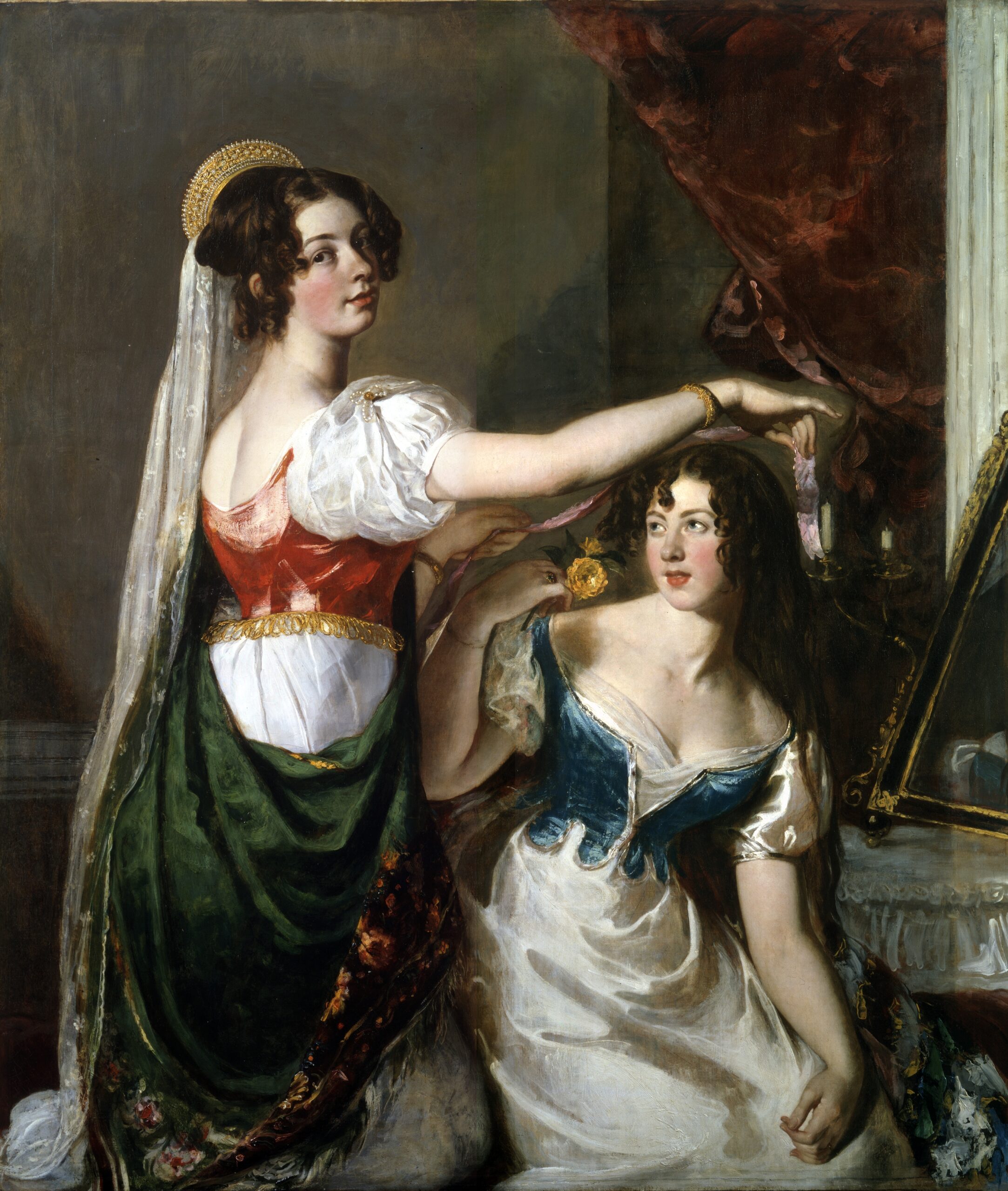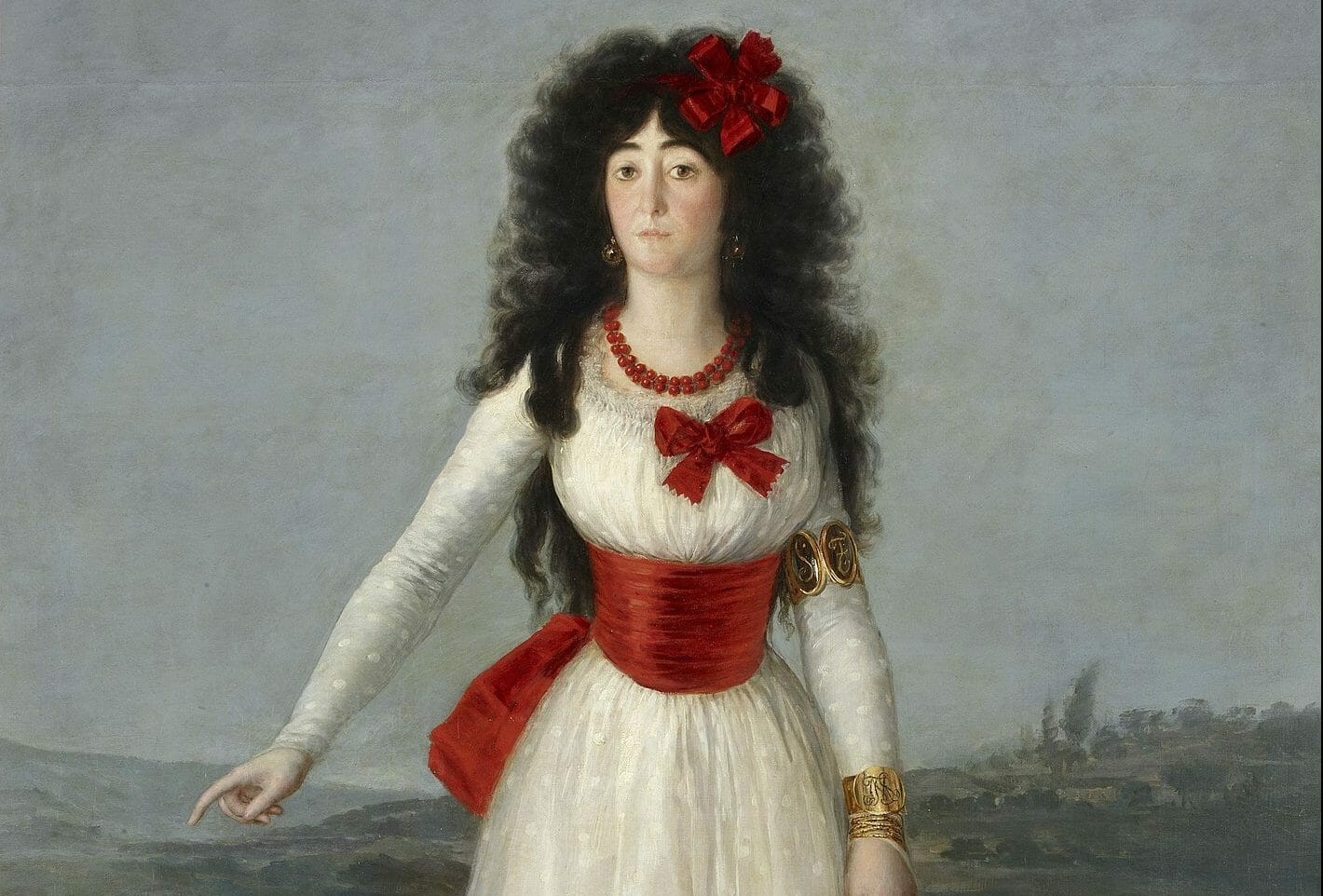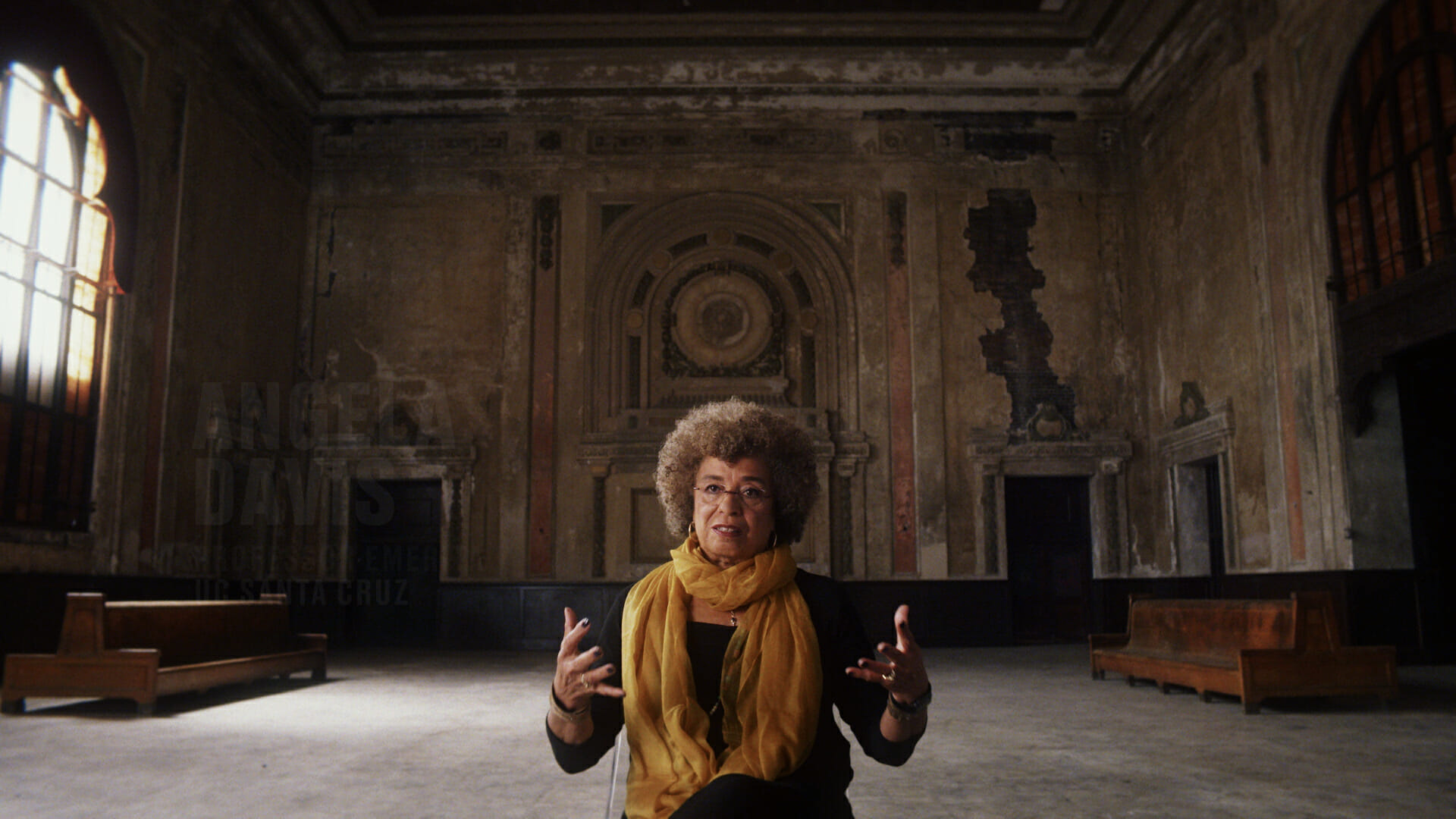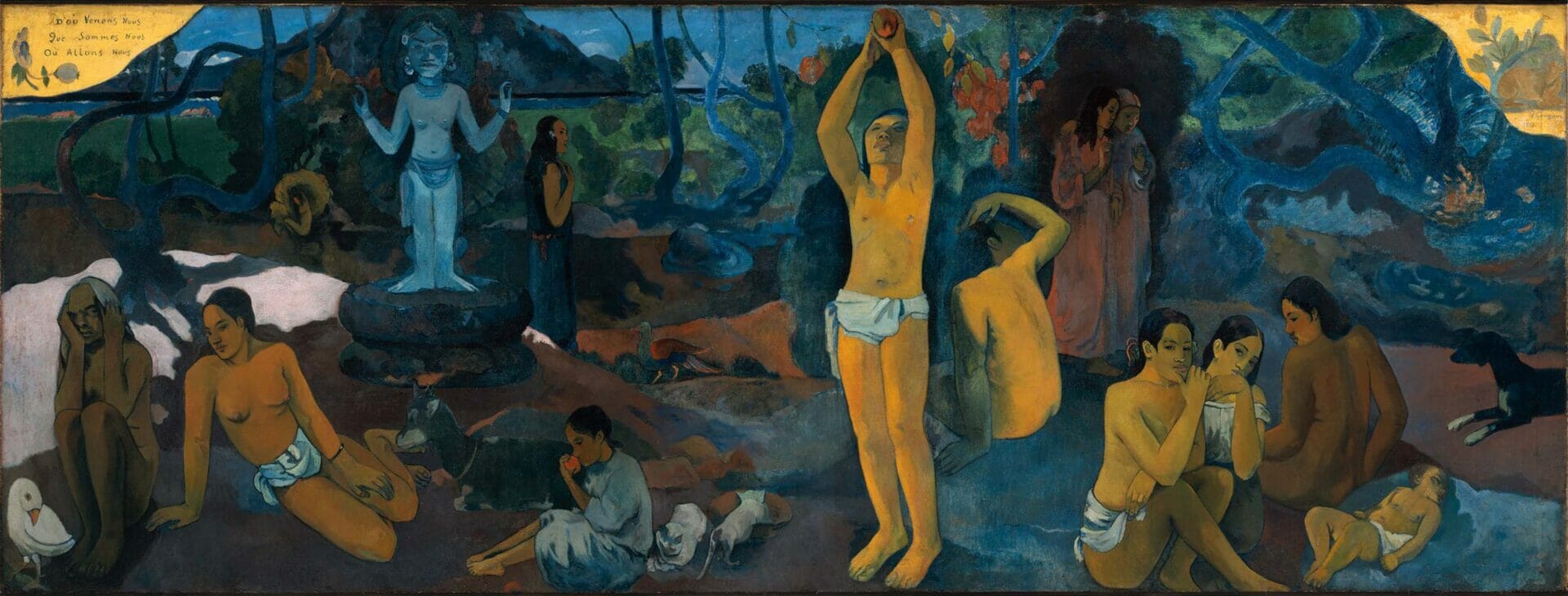The Black Color in the Arts | An Apology of Darkness

Black is the absence of light. Black is the result of absorbing all wavelengths of the visible spectrum without reflecting any of them. If there is no light, there is darkness, obscurity, night. In Romance languages, such as Italian, the word nero, that stands for black, derives from the Latin nigrum, which referred not only to the color but also to mourning, darkness, and doom. This connection between black and death is also present in ancient Greek, where nekrós means “dead.” In English, black comes from ancient Germanic languages and the Old British blæc, which indicates something devoid of light, the color of soot or charcoal.
Primitive humans obtained the color black from what nature could offer, using it to create cave paintings that allowed them to communicate their history across millennia. In Pompeii, black adorned the walls of sumptuous banquet halls. It is a color as ancient as human history itself.
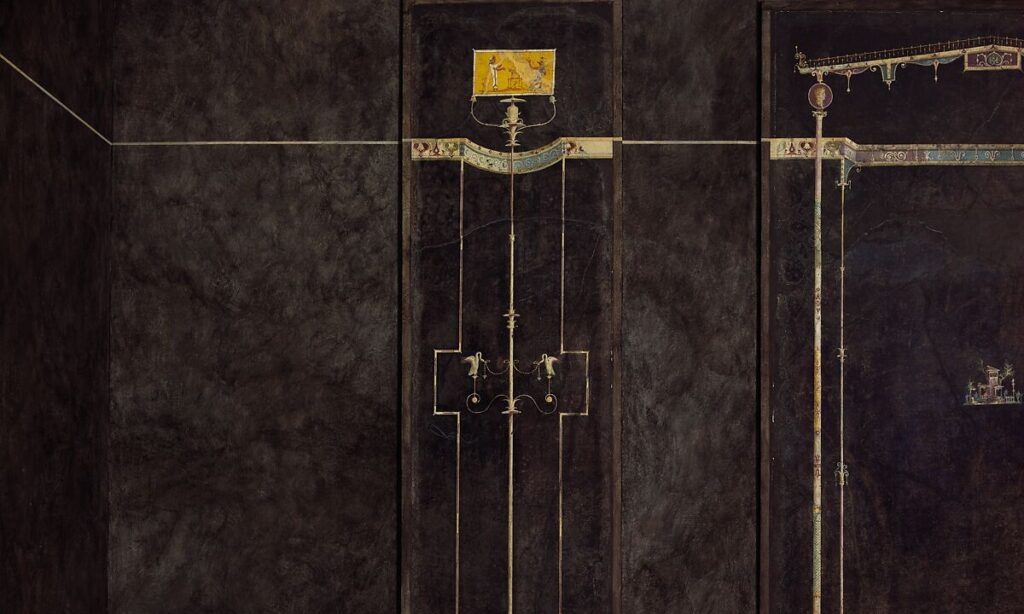
Courtesy of Metropolitan Museum of New York
In Hippocrates‘ theory of humors, it was believed that the human body contained four fundamental humors, each associated with a natural element and specific physical and psychological characteristics: Black bile, produced by the spleen, was associated with the earth and the melancholic temperament, characterized by paleness and sadness. The term melancholy indeed comes from the Greek melàinē cholè, which literally means “black bile.” In physics, black holes are celestial objects with such intense gravity that they attract everything, including light.
The cultural connotations of black vary depending on the part of the world we are in. More broadly, it represents darkness, fear, evil, and sorcery. In the West, it is the color of mourning and death, but in Christianity, it also signifies sacrifice and penance. In the Islamic world, however, it is the color of Muhammad’s flag, thus symbolizing a particular form of spirituality.
The War of Light and Shadows
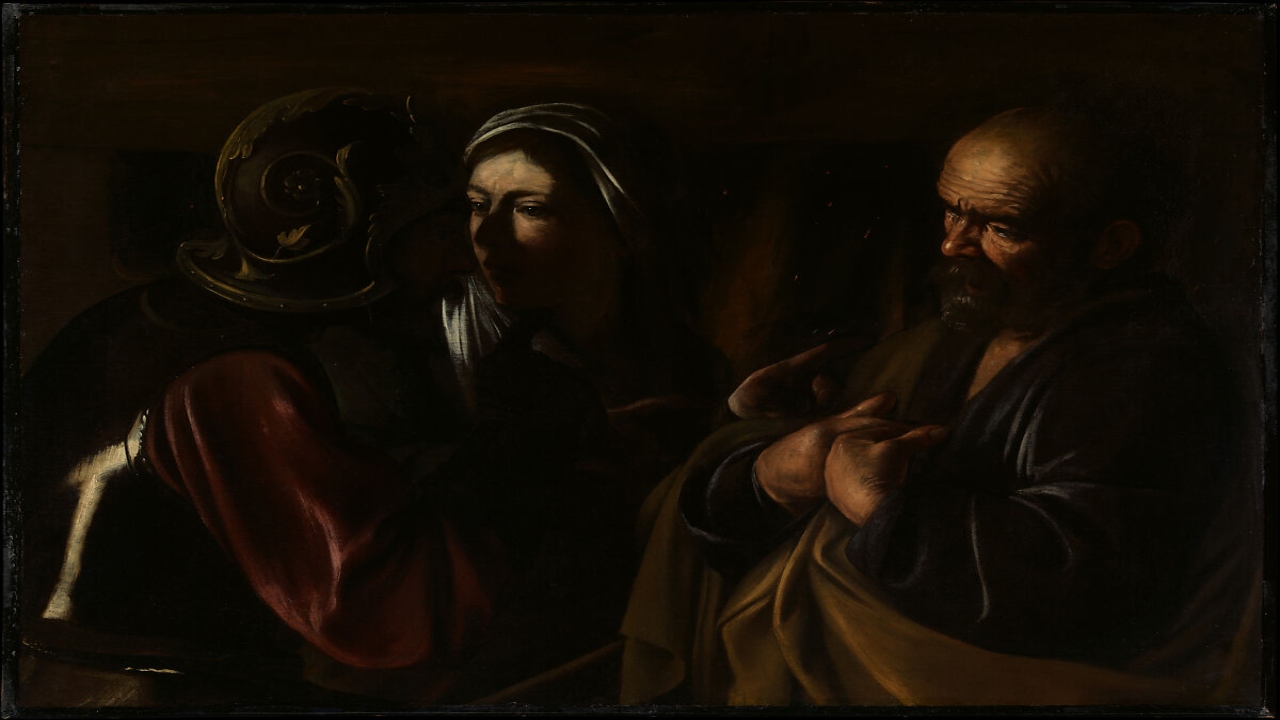
Darkness becomes a fundamental visual element when, contrasted with light, it highlights the dramatic intensity of the scene in the works of Michelangelo Merisi, better known as Caravaggio, and his circle. Caravaggio was known by many names, including the painter of shadows. His paintings reflect a tormented soul and a quest for a realism capable of unsettling the viewer. His difficult character prevented him from founding a school, but his influence was immense. Wherever he went, he left an indelible mark, captured by many Italian and foreign painters who, following in the shadow of the artist, made chiaroscuro a well-defined style.
For example, in The Denial of Saint Peter, the use of light is carefully studied, barely illuminating the faces of Saint Peter and the woman who accuses him of being a follower of Jesus, in front of a guard in semi-darkness. The background is almost black, forcing the viewer to focus on the light. This style also imparts a significant dramatic tone, especially when it comes to biblical scenes.
This can also be seen in The Resurrection by Francesco Boneri, a disciple of Caravaggio, from whom he takes the nickname Cecco del Caravaggio [see the painting below].
The painting depicts the episode of the resurrection mentioned in the Gospel of Matthew: an angel dressed in white opens Jesus’ tomb, while a powerful beam of light breaks through the semi-darkness surrounding the scene. The themes of these two works emphasize the contrast, especially religious, between light and darkness, understood as the opposition between good and evil.
But Caravaggio and company were neither the first nor the last to play with light and shadow in their works; Ghirlandaio, for example, already did so a century earlier in showing Saint Michael and the Angels at War with the Devil. The factions are distinguishable precisely by an opposition of colors.

The Denial of Saint Peter
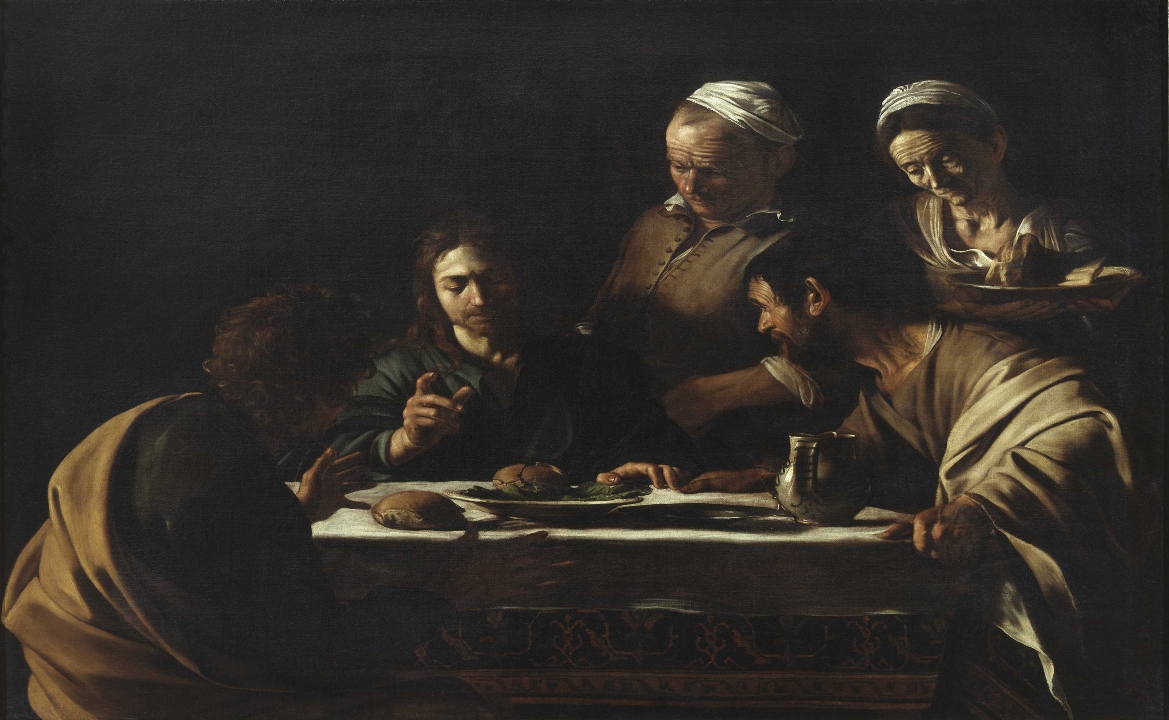
Dinner in Emmaus
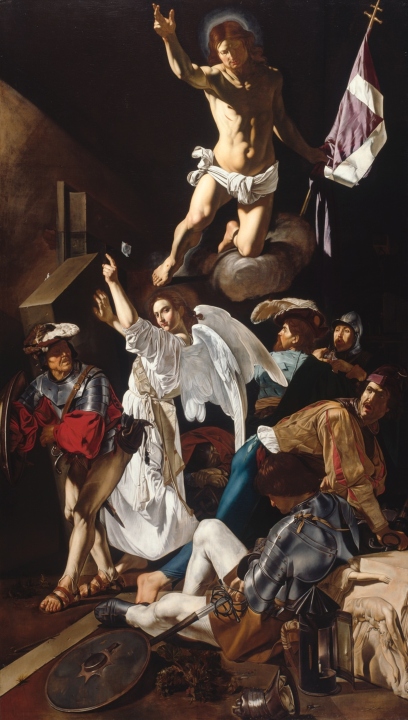
The Resurrection
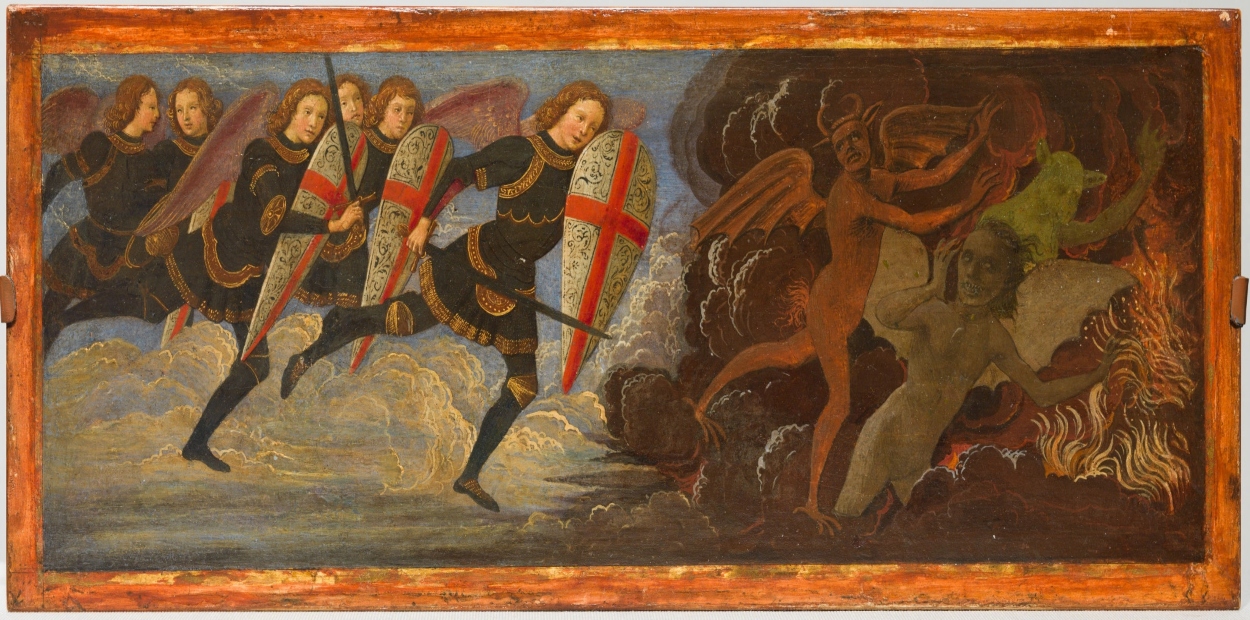
Saint Michael and the Angels at War with the Devil
From World War II until the late 1950s, on the other hand, the same drama of Caravaggio was sought in a new figurative art that was gradually emerging, film noir. In a detective setting, good and evil clash in a continuous duel between light and dark. Lighting is also crucial here, thanks to special angle work. There is always murder, it is always night and often raining, and there is a femme fatale, like the bewitching Ava Gardner, whom we find in Robert Siodmak‘s The Killers (1946), based on Ernest Hermingway‘s novel of the eponymous name.
The French critics who defined this American style called it dreamlike, cruel, contradictory, erotic, and strange.
Fear of the unknown

In the absence of light springs the unknown, which challenges the more rational part of man and prompts the fear that emerges from his subconscious, the fear of what he does not know. Fear is nothing but a human projection towards real or unreal objects, and from this arise phobias and nightmares. Nictophobia for example is the fear of the dark, a primal fear not of the lack of light itself, but of what might be hidden within it,and from which man cannot protect himself. That is why the night, the dark, are the perfect settings for horror films, where murderers, spectres or even recondite thoughts come to life during sleep.
Great filmmakers have been inspired by the macabre canvases of as many great painters to create their works of terror. For example, Guillermo del Toro was inspired by Goya‘s Saturn devouring his kids, in a macabre scene from The Faun’s Labyrinth; perhaps even the dream demons with whom Freddy Kruger teams up in The Nightmare are the same as those in Fuseli‘s painting of the same name.
For psychologist Carl Jung, nightmares represent a confrontation with the shadow, or hidden or rejected parts of the personality. They are a manifestation of the unconscious trying to rebalance the psyche, bringing to light unresolved conflicts or fears. Nightmares, while frightening, have a potential healing role and promote personal growth in the process of individualisation.
I created art according to my own opinion, with my eyes open to the wonders of the visible world.
It is nature that requires us to obey the gifts it has given us.
I suffered the torments of the imagination and the surprises it gave under the pencil; but these surprises I led and guided according to the organic laws of the art I know and feel, with the sole purpose of obtaining in the viewer, by subdued fascination, every possible call of the uncertain and every evocation, to the boundaries of thought.
Odilon Redon
The French symbolist Odilon Redon also experienced the dream dimension as a way to explore the self. In the late 19th century, the artist created a series of charcoal lithographs, known as noirs, depicting a series of monsters, demons and ghosts coming to life in unreal dimensions. He locked himself in an artistic vortex of black, in which he rejected all shades of color. He was inspired by Goya, the writings of Edgar Allan Poe, and the melancholy of Baudelaire to whom he dedicated some of his noirs. Haunting, an 1894 lithograph, shows a ghostly female figure floating and eerie figures emerge from the darkness behind her. His production of terror was interrupted with the birth of his second child, which led to a return to color.
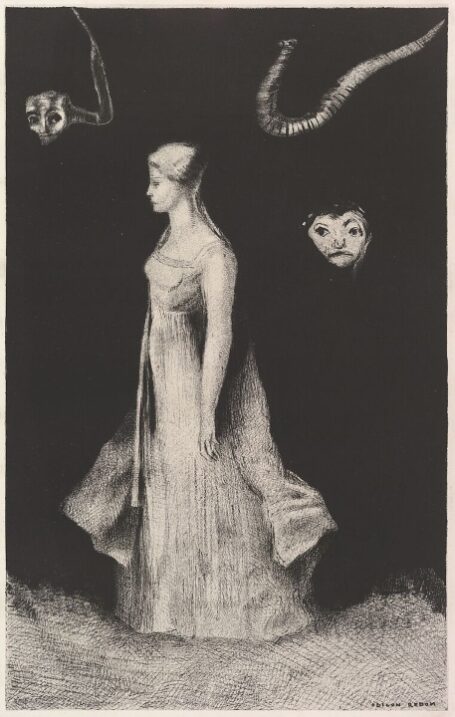
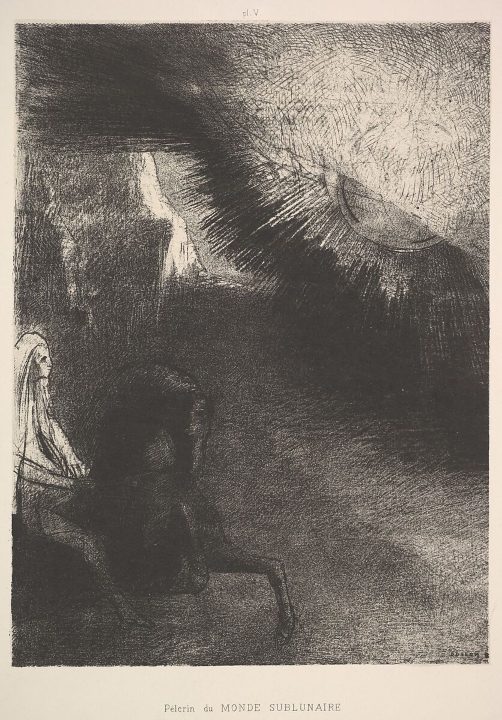
Pilgrim from a sublunar world

In the shadow of the wing, the black creature bit
The Obscurity of the Soul
Next to the wholly nocturnal men there is almost always, as if bound to them, a soul of light. It is, so called, the negative shadow those ones cast.
Friedrich Nietzsche
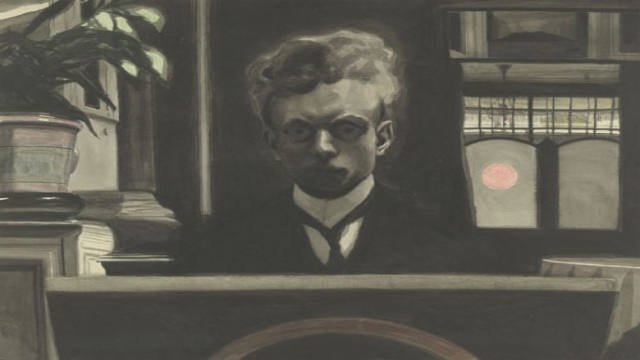
Léon Spilliaert was a Belgian painter and illustrator, born in 1881 in Ostend, and who lived as a nomad all his life between his hometown and Brussels. He began his artistic journey as early as age 18, and the works he produced were imbued with a strong darkness. He used to paint at night; his city was an inspiration for many depictions, always catapulted into a dreamlike, almost metaphysical atmosphere. His art was a reflection of an inner darkness that demanded to come out and a loneliness from which he wanted to break free. He felt the need to explore new physical and mental horizons other than the hostile, northern seascape that Ostend offered him. The Musée d’Orsay, which preserves many of his works, dedicated an exhibition to him entitled Lumière et Solitude. He was influenced by Mallarmé, Poe, Redon and felt very close to the thought of Nietzsche and Schopenhauer. His style gradually becomes more intimate, taking much from French symbolism and the German expressionism of Munch. His self-portraits look like something out of a horror story, given the angles and the prevalent presence of black. The gazes are lost in the void. Scenes of everyday life are charged with disquiet, black figures silhouetted against ghostly, melancholy landscapes.
Like Odilon Redon, at some point the darkness comes to an end, thanks to a happy event, such as his marriage to his beloved Rachel, he embraces a less somber and more colorful style, yet maintaining a metaphysical atmosphere.

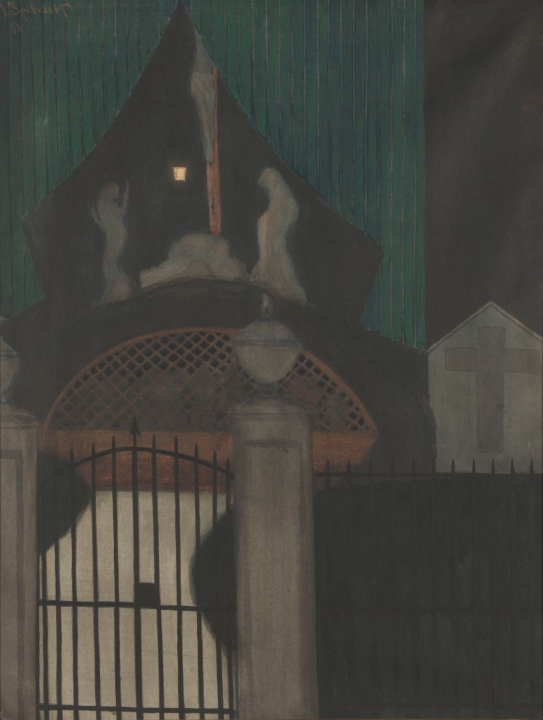
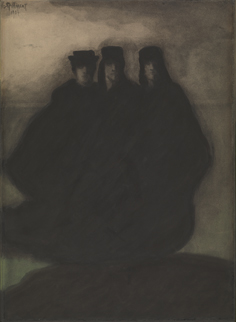
Death and its representations
For Plato, death was only physical, the immortal soul continued to exist free; for the Greeks there was Hades, god of the underworld, ready to welcome those who had done only evil in life into the dark waters of the Styx. For the Egyptians there was Anubis, the black jackal ready to weigh the heart and soul of the dead and then decide their fate. In several religions death has the face of an angel, not evil, but acting by divine will: in Judaism he takes the name Samael, in Christianity he is sometimes identified with St. Michael.
In the Middle Ages the image of death spread as a skeleton dressed in black who, with a scythe, was ready to snuff out the lives of his targets. This iconography derives from the Black Death epidemic that struck Europe in 1347 causing more than 20 million deaths. The one thing that unites death in all its conceptions is that it makes everyone equal; it makes no distinction for anyone. In many cultures there is the myth of the afterlife, it is believed or hoped that there is more after death, that it may be a better life or a punishment, such as hell. That’s why in many funeral rites, from the oldest, it was customary to leave items that could serve the deceased on the other side.



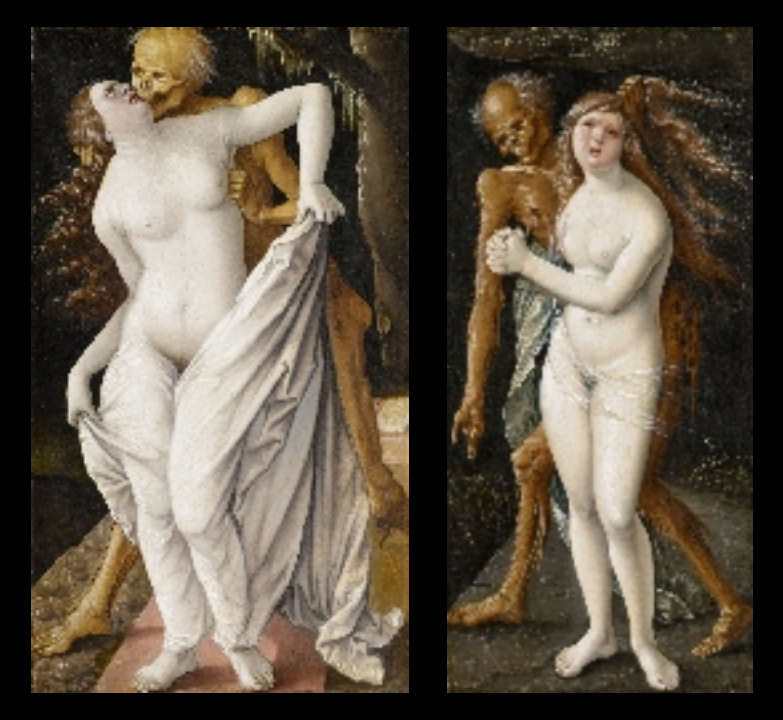
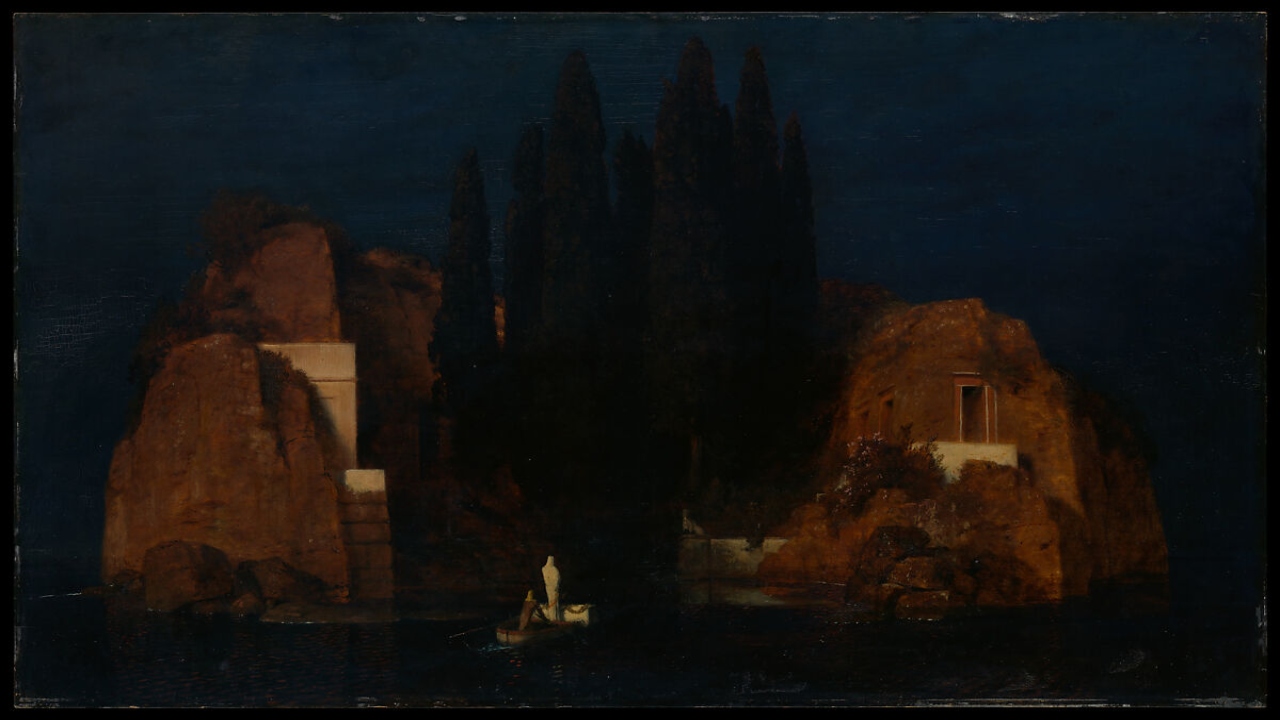
Mourning is part of the process of death; it is a rite of passage in which people who are alive mourn the passing of those who are gone. In the life of an ordinary person, mourning is a period of varying and subjective duration, in which one takes time to accept the pain of loss and be able to continue in one’s life. The Swiss artist Arnold Böcklin painted for his patron, Marie Berna, a memorial in honor of her late husband. There is a boat carrying a coffin escorted by a ghostly figure, to the dead man’s island. The subject was taken up several times by Böcklin himself and inspired other artists such as Salvator Dalì.
In a broader social context, beginning with royal families in the 15th century but already with the Romans, black became the color to be worn during the wake and throughout the mourning period. At court and in high society in general, it was customary to remain in mourning for a minimum of six months for the loss of close ones.
The Witching Hour
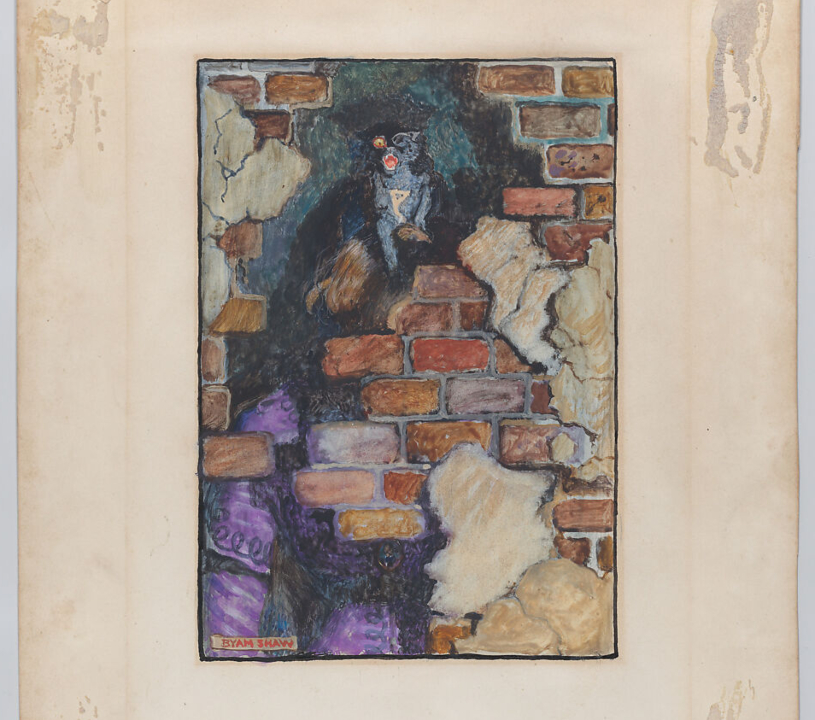
Magic is based on a natural balance that can be easily disrupted when someone abuses it. Like the Chinese concept of yin and yang, there is white magic that cannot subsist without black magic and vice versa. To define what is good, one must also define what is bad. In fact, there is no precise concept of black magic, but it is mostly understood as an abuse of power, the call of an evil power that can only break the balance and bring misfortune to those who undergo it and those who operate it. We speak of wizards, witches, and fairies who, according to ancient and distant legends, cast spells and create potions for any purpose. But when it comes to black magic, we talk mostly about witches, terrifying-looking old hags with flying broomsticks, simmering pots and a few black cats here and there. Over the centuries they have been depicted in every possible way.
Many will remember the Salem fire, have heard of rituals and sacrifices, or be familiar with more pop representations of this mythological figure seen in TV series such as in Sabrina witch life, Witches, or the more recent Wanda Vision and Agatha All Along. In England in the late 1700s, when the terror of witchcraft was all the rage, people began to talk about the witching hour, to denote the deepest, darkest night, the time when ghosts, demons, and witches were abroad and would go wild.
But they are much older figures, such as Hecate, more of a goddess really, belonging to pre-Indo-European mythology and later taken up in Greek and Roman mythology. She was celebrated as the lady of magic, darkness and night, capable of changing form and for this reason often depicted in triple form: celestial, earthly and marine. Depending on the population that celebrated or feared her, she took on different powers. She was also one of the three witches in Shakespeare‘s Macbeth .
William Blake, in 1795, presents her dressed in black, with two other bodies behind her, in a nocturnal setting that can be guessed from the presence of the bat and the owl. A year later, Fuseli shows her in the midst of a ritual during a lunar eclipse, surrounded by other witches of the night.

The Night of Enitharmon’s Joy (formerly called ‘Hecate’)
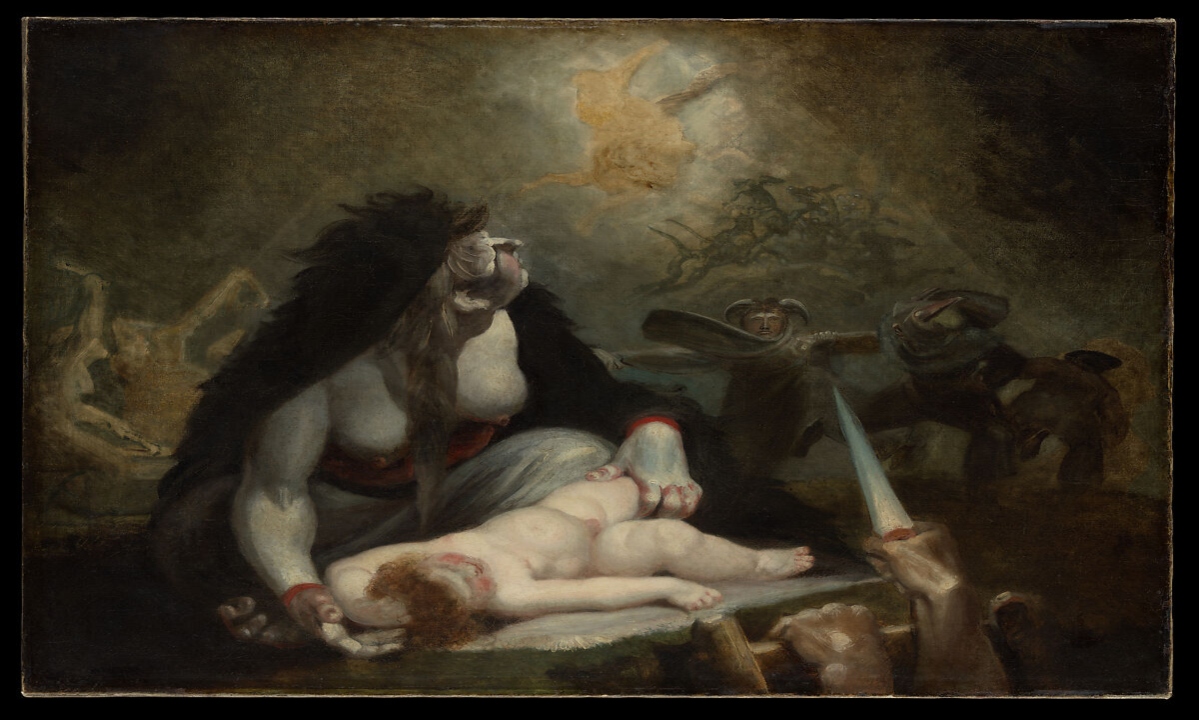
The Night-Hag Visiting Lapland Witches
A synonym of Style
Black in the world of fashion has a timeless appeal, being a symbol of elegance, mystery and power. It is a color that has evolved over the centuries from having negative or connotations of mourning, to becoming one of the mainstays of formal and sophisticated clothing. Since the 19th century, black has been adopted for formal and important occasions, such as evening gowns, tuxedos, and suits.
Its versatility found its greatest recognition in the 1920s, when Coco Chanel introduced the famous “little black dress,” forever changing the way black was perceived: from a color associated with mourning to a symbol of sophistication and restraint. There are different shades of black in fashion, from absolute black, to smoky black, raven, and many others, which only the most discerning and stylish eye can catch.
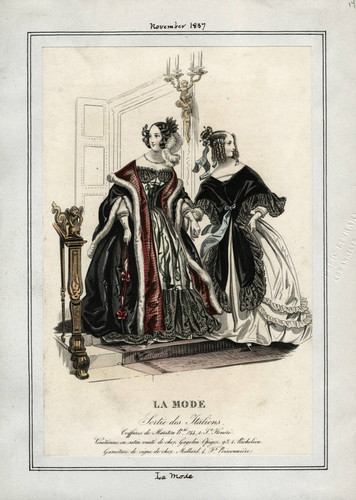
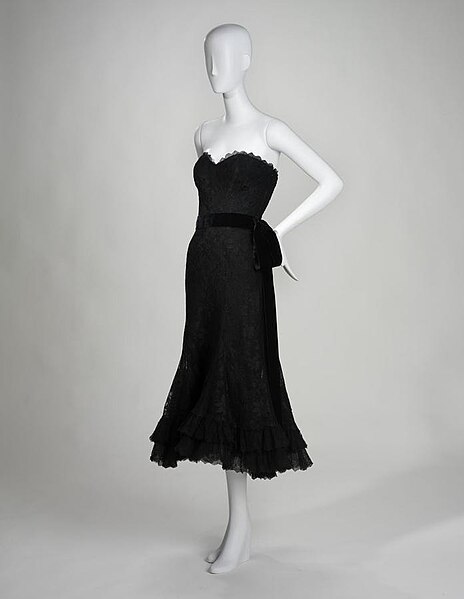

Black is also a favorite choice in rebellious subcultures, such as punk, gothic, and rock, where it represents a statement of nonconformity, power, and defiance of social conventions.
In addition to Coco Chanel’s, there was another black dress whuch stands out in history, the Revenge Dress worn in 1994 by Lady Diana Spencer after Prince Charles‘ admission about his affair with Camilla Parker Bowles, the current queen consort of England. The dress aroused boundless uproar, photos of a radiant and daring Lady Di went around the world, showing everyone what the then Prince Charles was missing. Since then there have been so many celebrities who after a breakup, a divorce, have sported their best look, very often in black, to show their strength and beauty, despite the bad time.
Visualizza questo post su Instagram
Skin color and fight
The color of human skin is determined by the amount of melanin in it. This does not indicate any difference between a human being of olive, pale, dark or any other shade of skin; it is only an aesthetic appearance, but for science it does not determine any anatomical difference. For human beings, on the other hand, it has for centuries constituted a principle of stigmatization that has justified and unfortunately for some still justifies racism.
Racism has some of its roots in European colonialism, which began in the 16th century when European powers began colonizing lands in Africa, Asia and the Americas. Europeans justified their domination with ideas of racial superiority, seeing local populations as varyingly inferior, different or savage. This thinking was further legitimized by the Atlantic slave trade, where millions of Africans were enslaved and deported to the colonies to work on cotton, tobacco, and sugar plantations in the Americas. Slavery dehumanized entire populations and built an economic system based on exploitation of colonized populations.
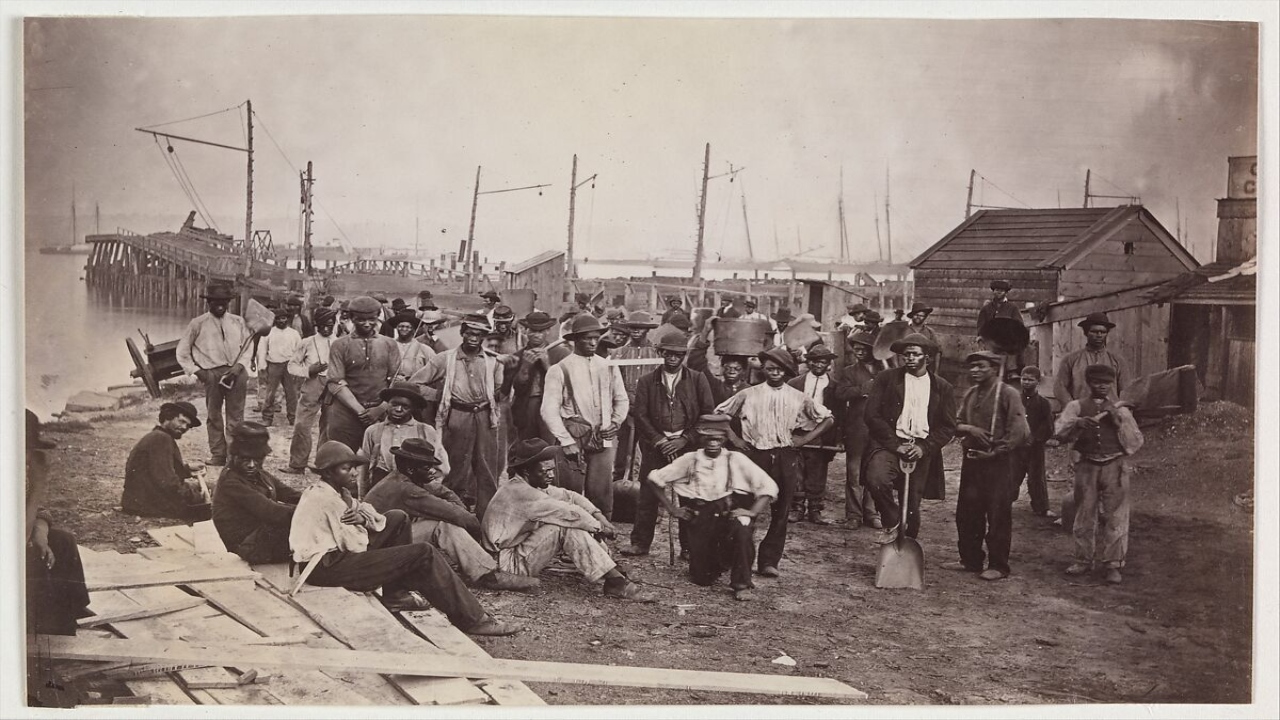
After the abolition of slavery in the 19th century, racism did not disappear, but manifested itself through segregation, discrimination, and violence. The blues, which grew out of slave labor songs, became a form of cultural resistance and expression of the suffering of black people. Paul Gauguin, with his exotic paintings depicting Polynesian subjects, reflected a supposedly Western obsession with the “primitive,” perpetuating some colonial stereotypes.
In the 20th century, civil rights movements and, more recently, Black Lives Matter have struggled against racial violence and structural discrimination, denouncing the colonial legacy that still oppresses black communities today. Racism is a complex and persistent phenomenon that continues to require deep action and reflection to address.
